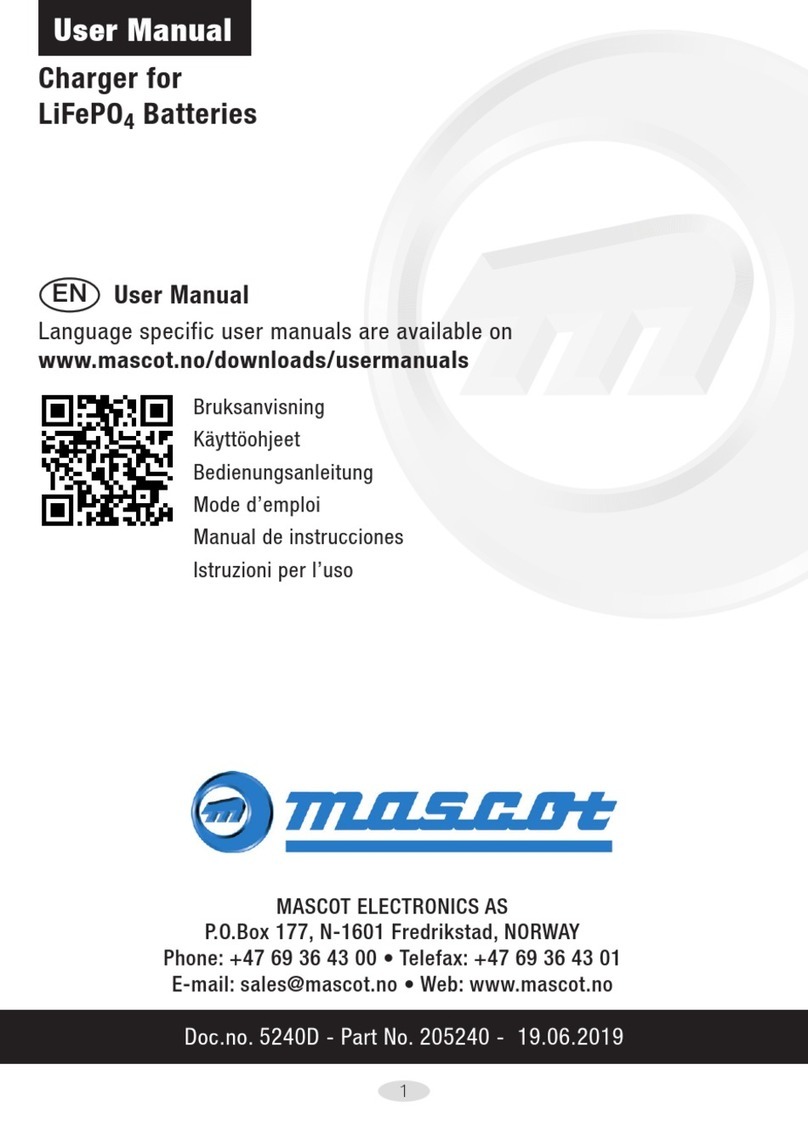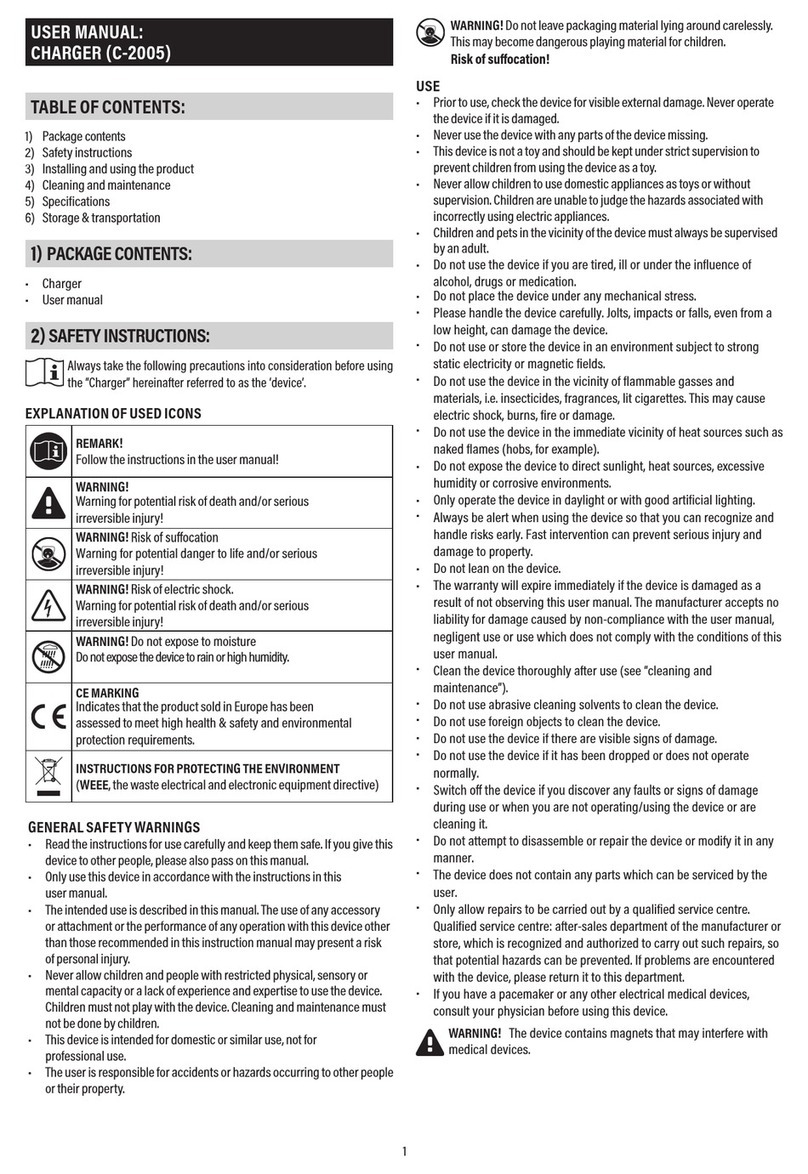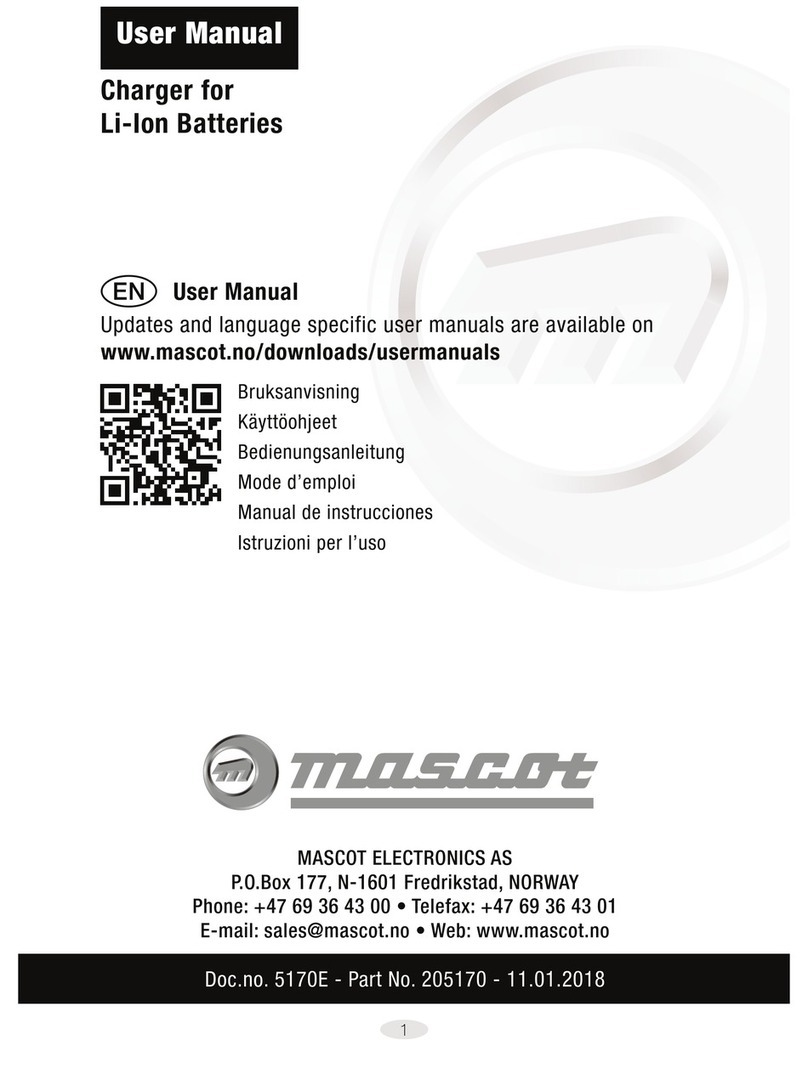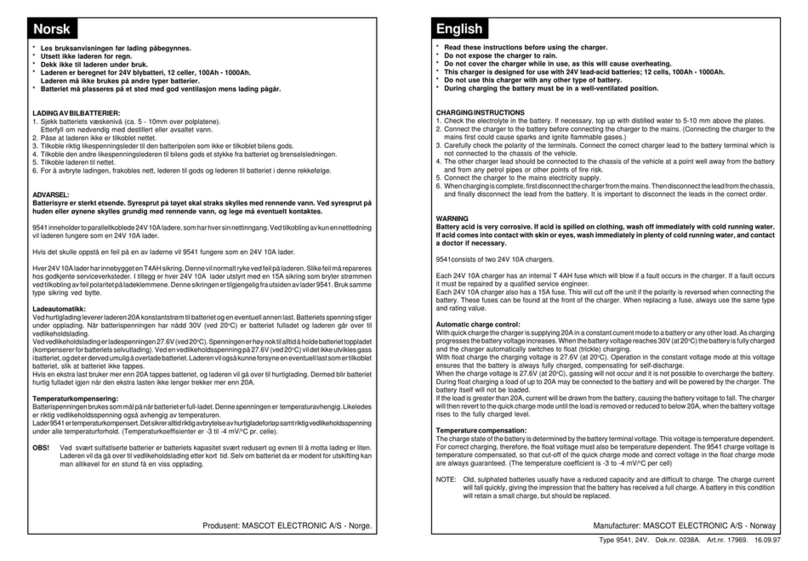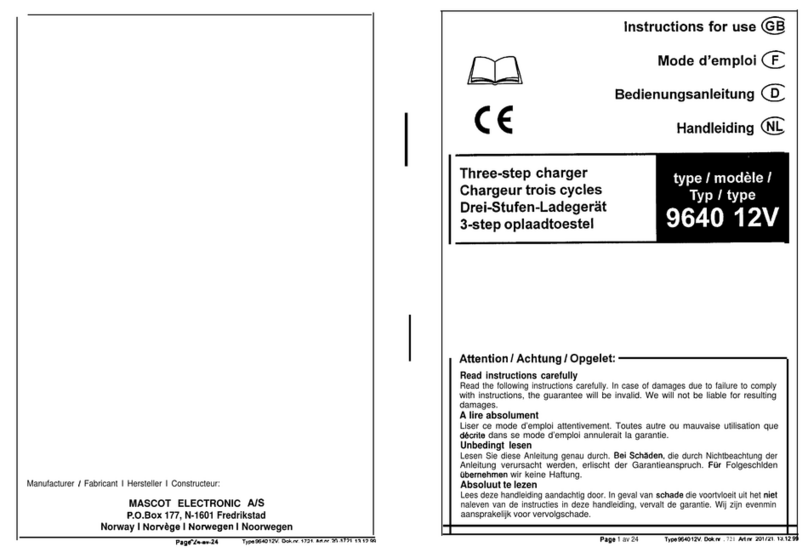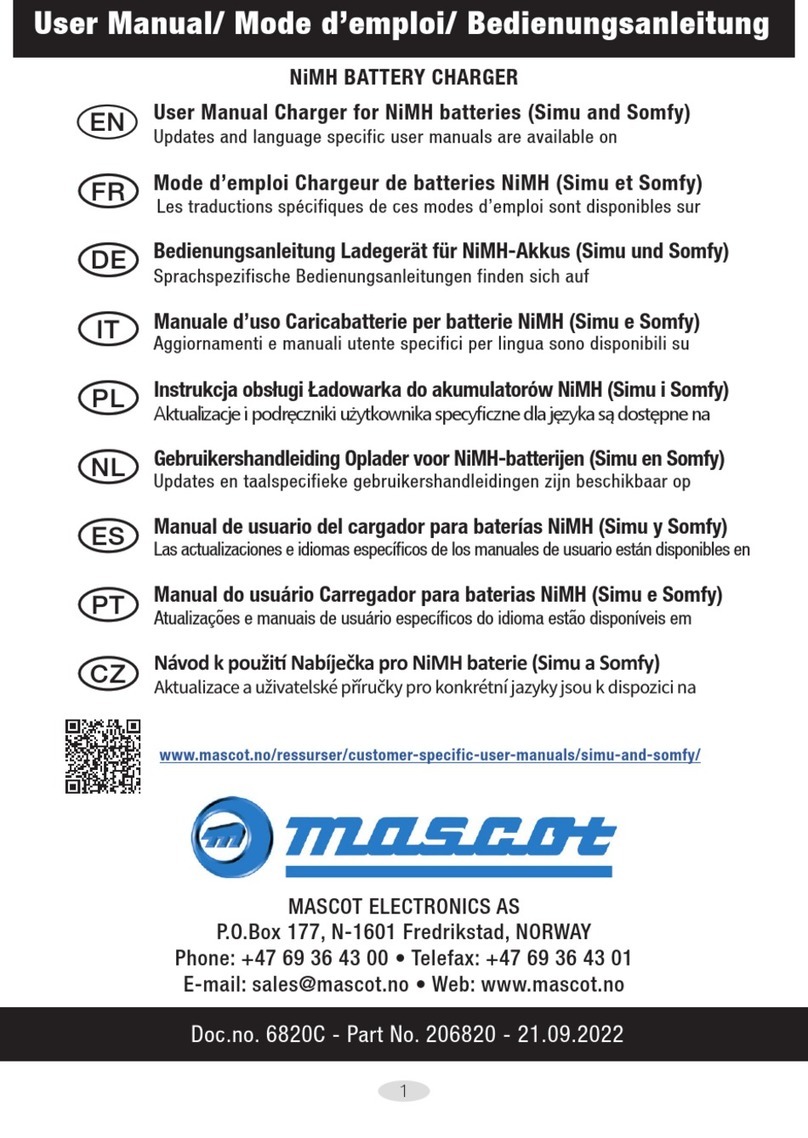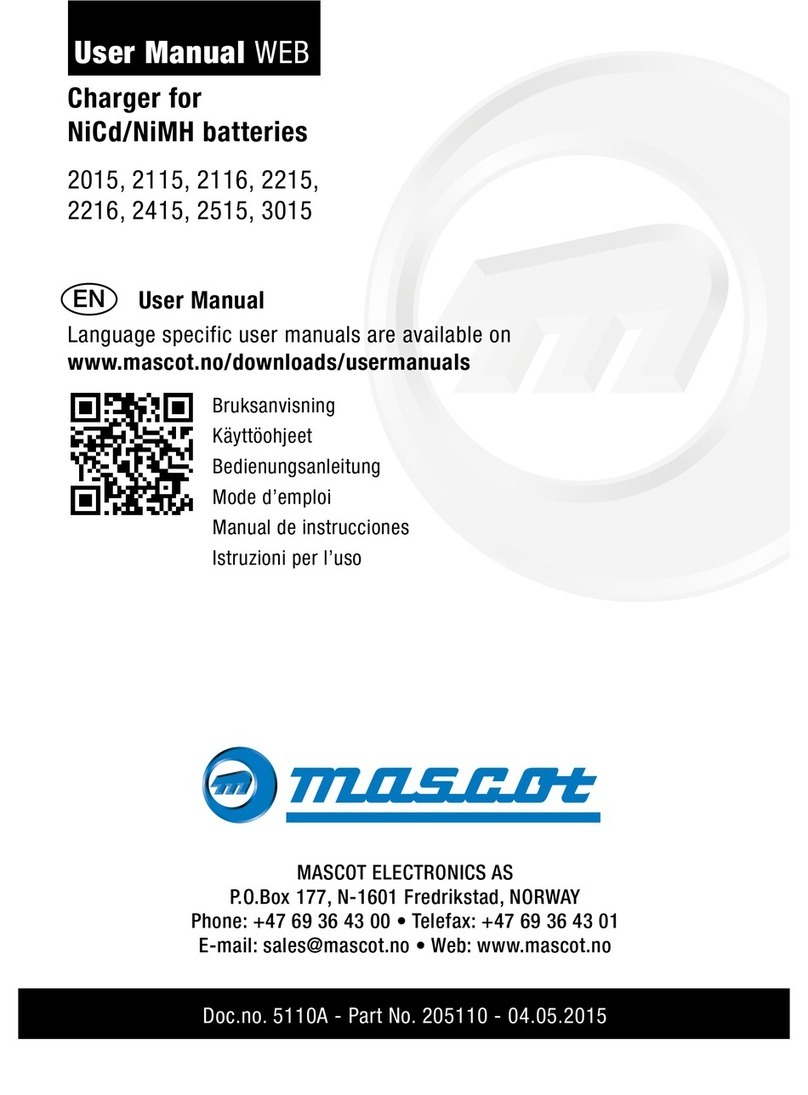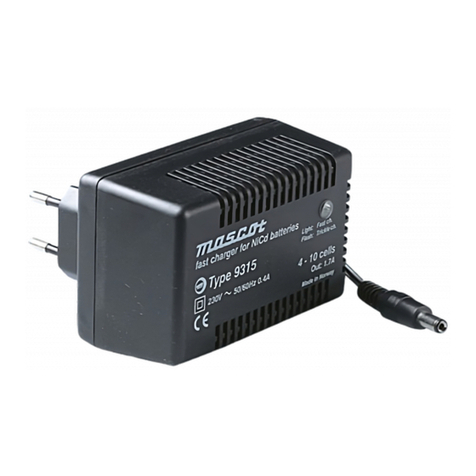3
Cautions to observe prior to use
• The intended use for this product is to charge a
battery or a battery powered electrical accessory
(NiCd/NiMH, Lead-Acid, Lithium-Ion or LiFePO4
batteries) or to be used as a Power Supply to
power an electrical accessory. Please see the
marking on the product you have to verify the
type of product you have and read the applicable
instructions and technical specifications included
with this manual.
• This product may be used by unskilled operators,
under the condition that these instructions are
followed.
• Unskilled operators may contact the supplier or
manufacturer for assistance, if needed, in setting
up, using or maintaining this product and to report
unexpected operation or events.
• This appliance can be used by children aged from
8 years and above and persons with reduced
physical, sensory or mental capabilities or lack
of experience and knowledge if they have been
given supervision or instruction concerning use of
the appliance in a safe way and understand the
hazards involved. Children shall not play with the
appliance.
• Do not allow animals to come into contact with
this product. Some animals are known to cause
damage to cables etc which may be a potential for
risk of electric shock and excessive temperatures.
Also, cables and small parts may represent a
strangulation risk for the animal.
• If the product is equipped with a mains cord,
please check that the cord is not damaged. If the
cord is damaged, the product must not be used
until the cord is replaced. Replacement should be
carried out by qualified personnel.
• The mains socket outlet used should always be
easily accessible to facilitate immediate removal of
the products mains supply should an operational
error occur during use. If the product has a
detachable mains cord the appliance coupler may
be used as a disconnect device.
• The product is “switched on” by inserting the mains
plug into the mains socket and “switched off”
by disconnecting the mains plug from the mains
socket.
• The product may be connected to an IT type
mains supply.
• For use in U.S.A.:
- Be sure to use 125V 15A receptacle
configuration before plugging in.
- Use a UL817-standard compliant mains cord (plug
type NEMA 1-15, cord type SJT or SVT).
• For use outside U.S.A:
Use a mains cord compliant with the country
specific requirements.
• The time from powering this product until its full
function starts may exceed 15 seconds.
• Should an operational error or unexpected change
in the performance occur during use; disconnect
the product from the mains immediately by
disconnecting the mains plug from the mains
socket and contact the supplier
• When not in use please think about disconnecting
the product from the mains. This will reduce the
risk of hazards, reduce the products environmental
impact and save electricity costs.
• To avoid overheating make sure there is sufficient
room for the circulation of air around the product
when in use. Do not cover it up.
• Even though this product complies with relevant
safety standards it should not be in contact with
human skin for long periods as some people
may get allergies or injuries from long-term
contact with moderate temperatures and/or plastic
materials.
• Prior to using this product with accessories and/or
interconnected equipment please carefully read its
respective User Manuals.
• If the product is supplied with exchangeable output
plugs, please see separate page for assembly.
• Output cables having a modular plug ( similar to a
telephone connector) must never be connected to
a telephone outlet.
